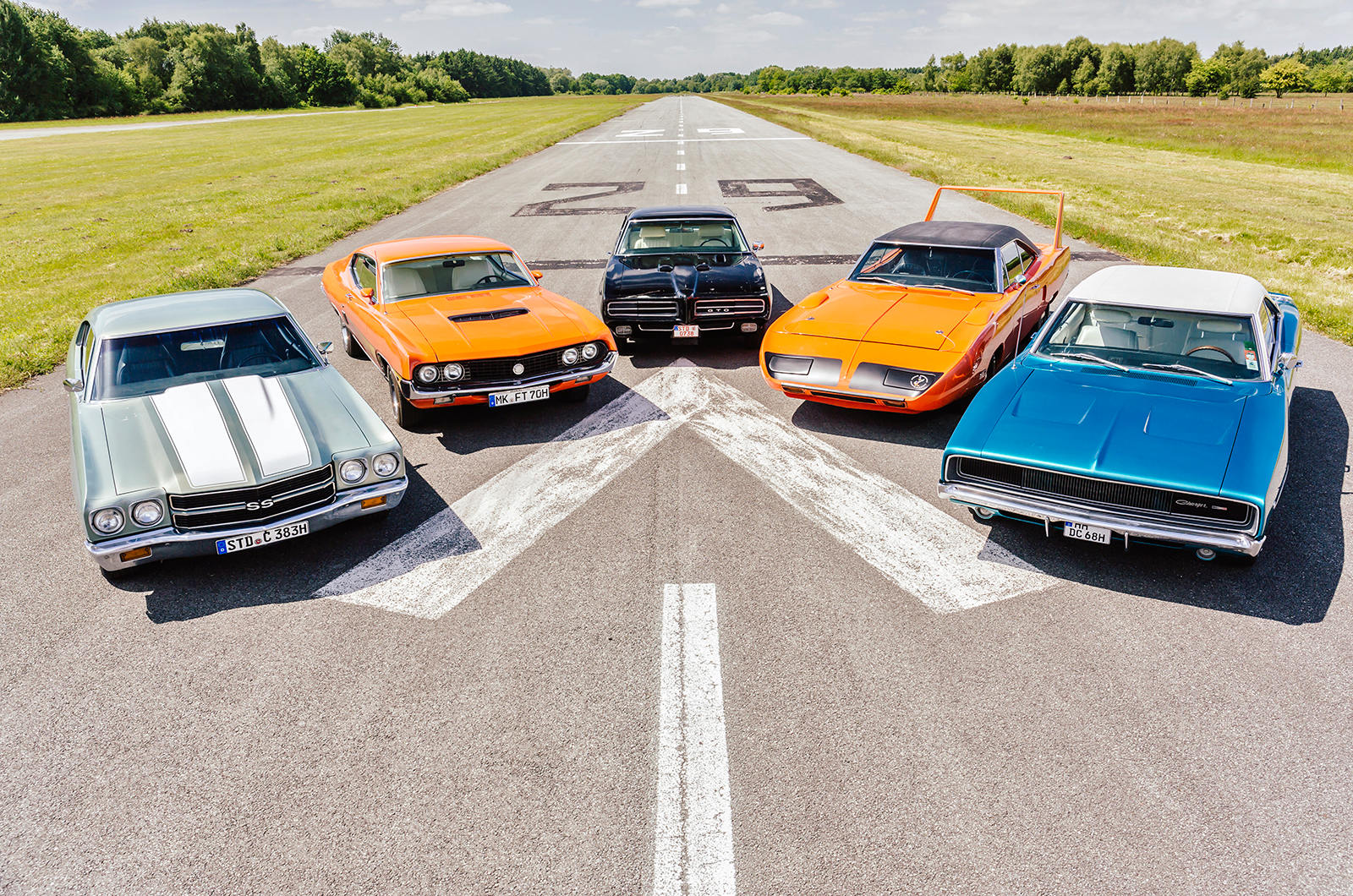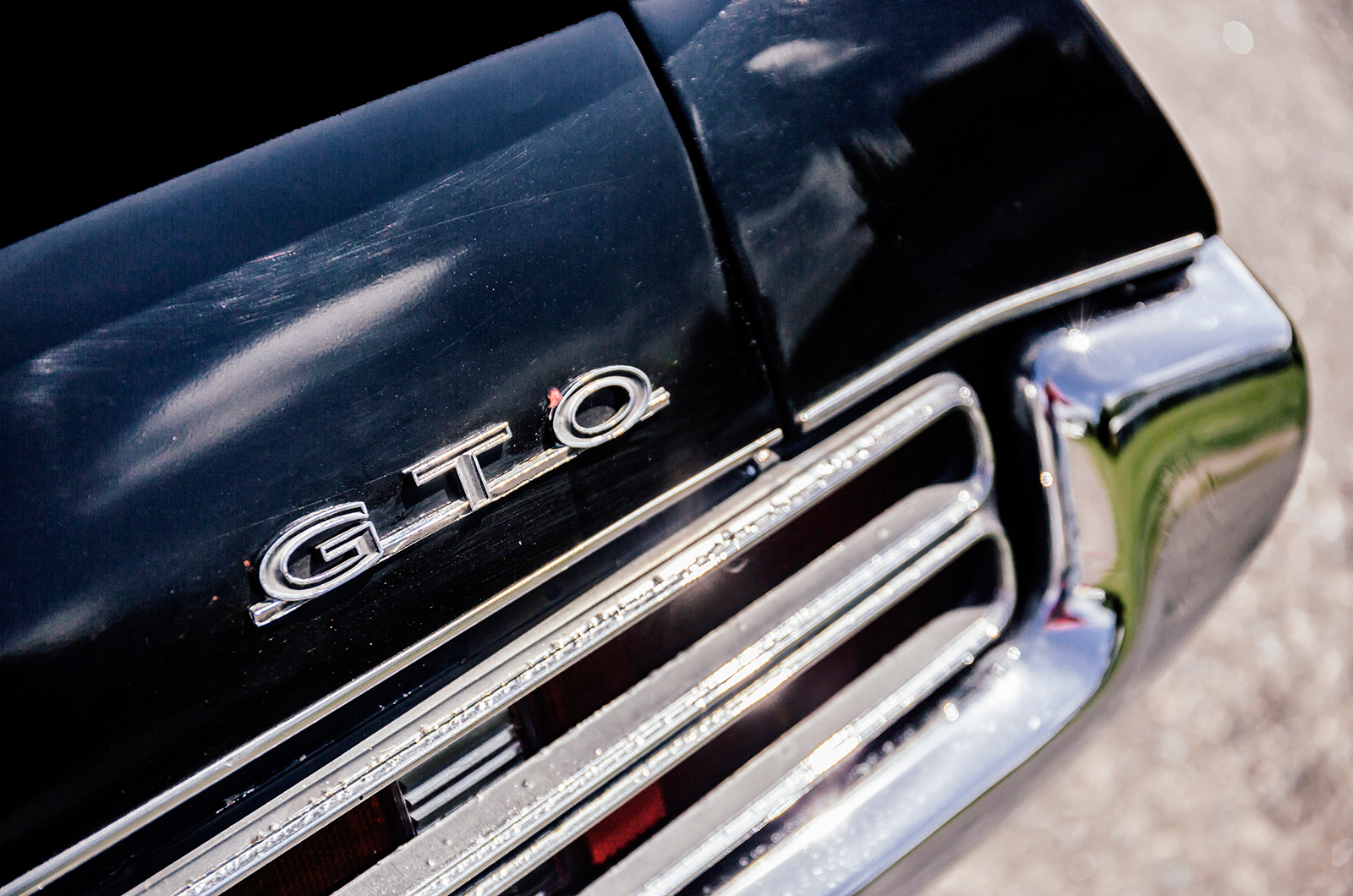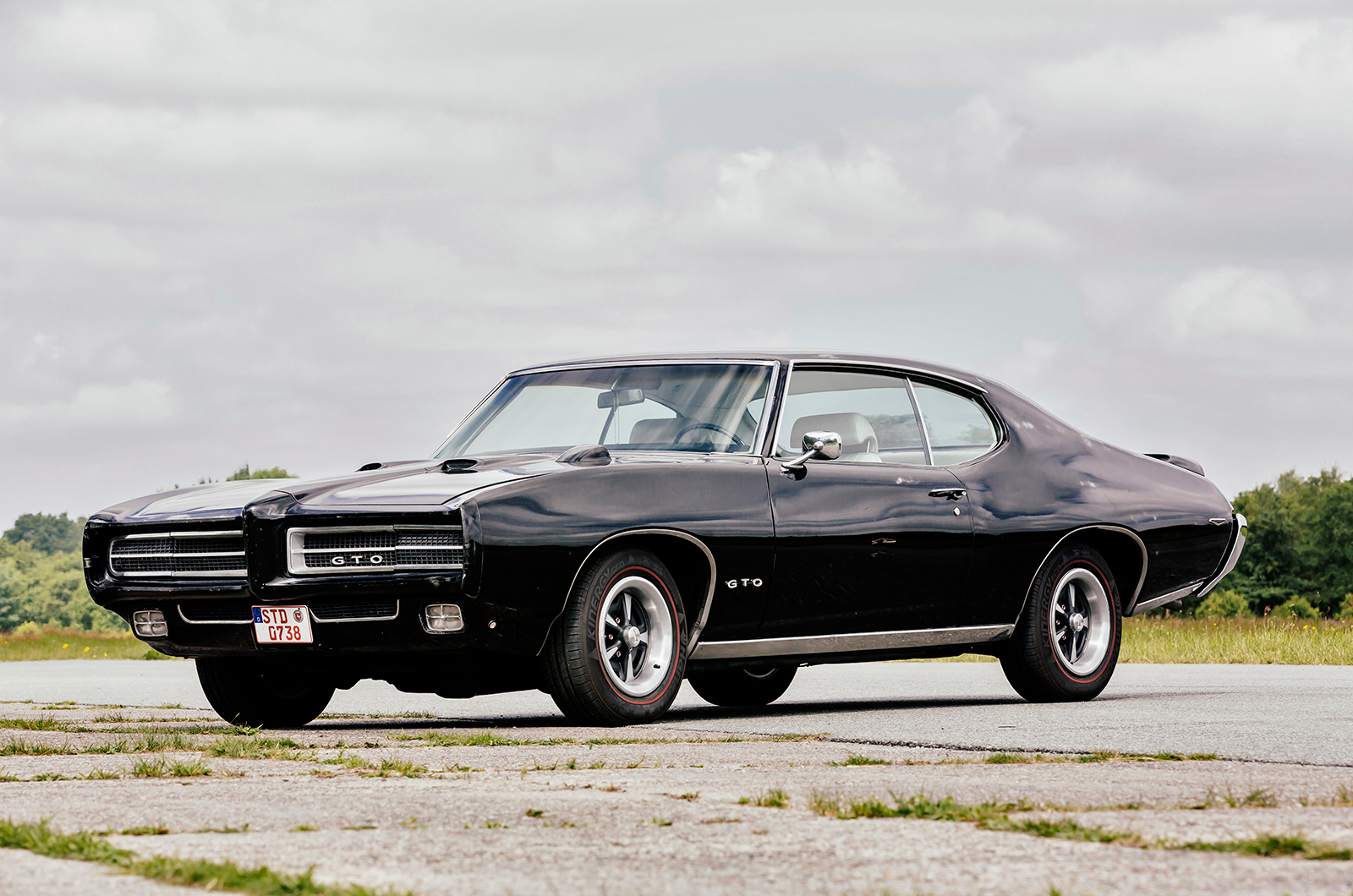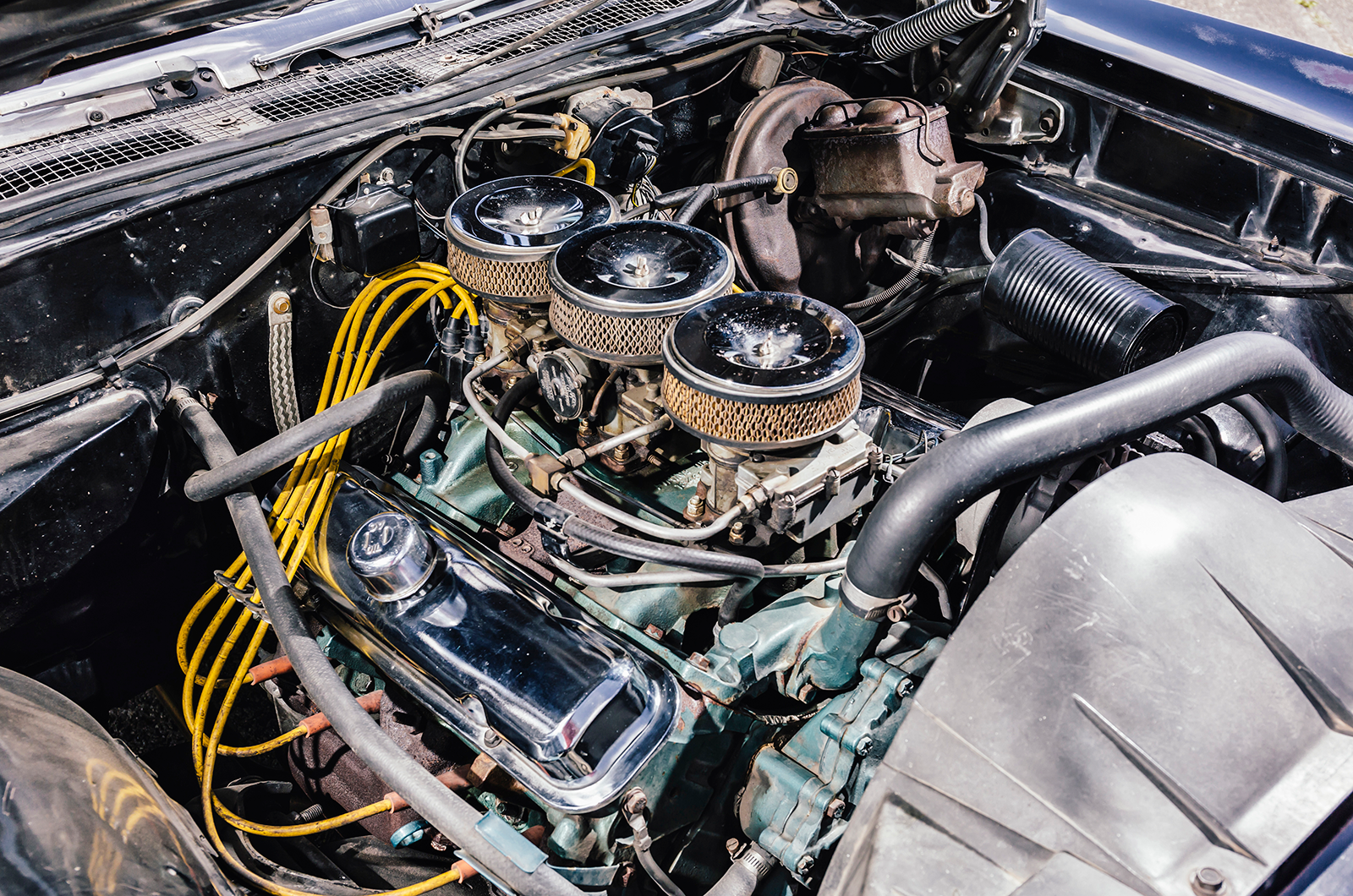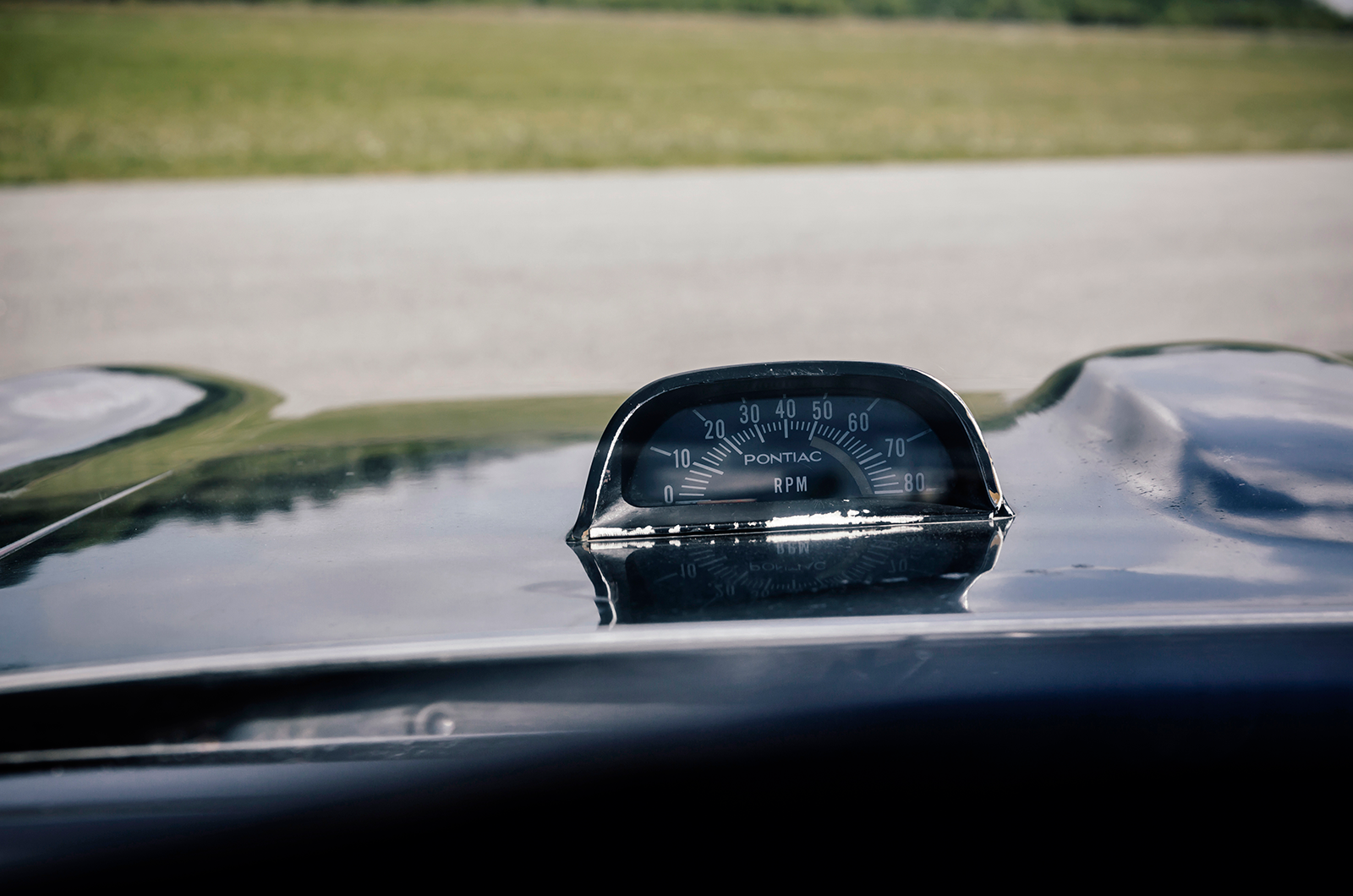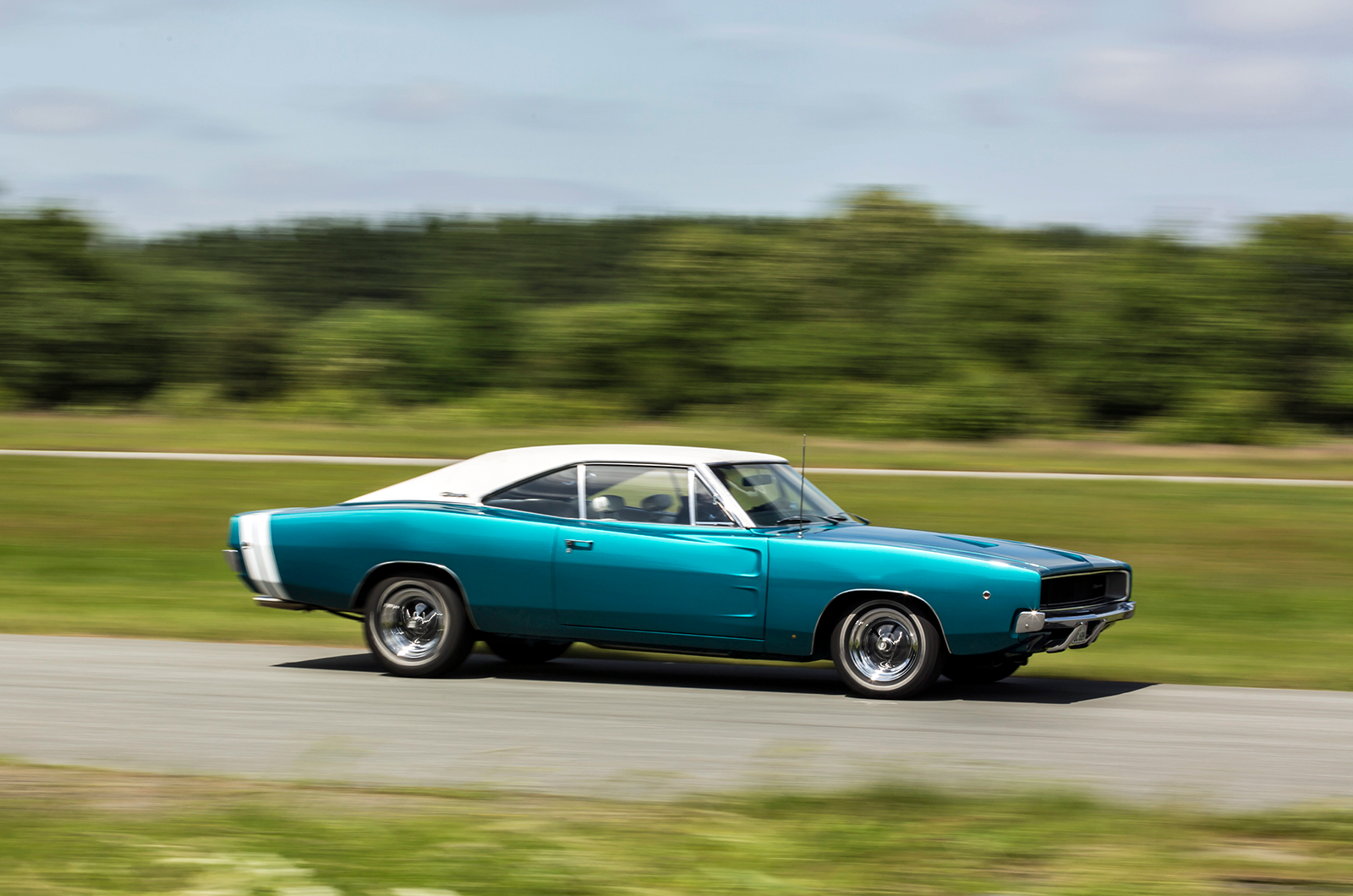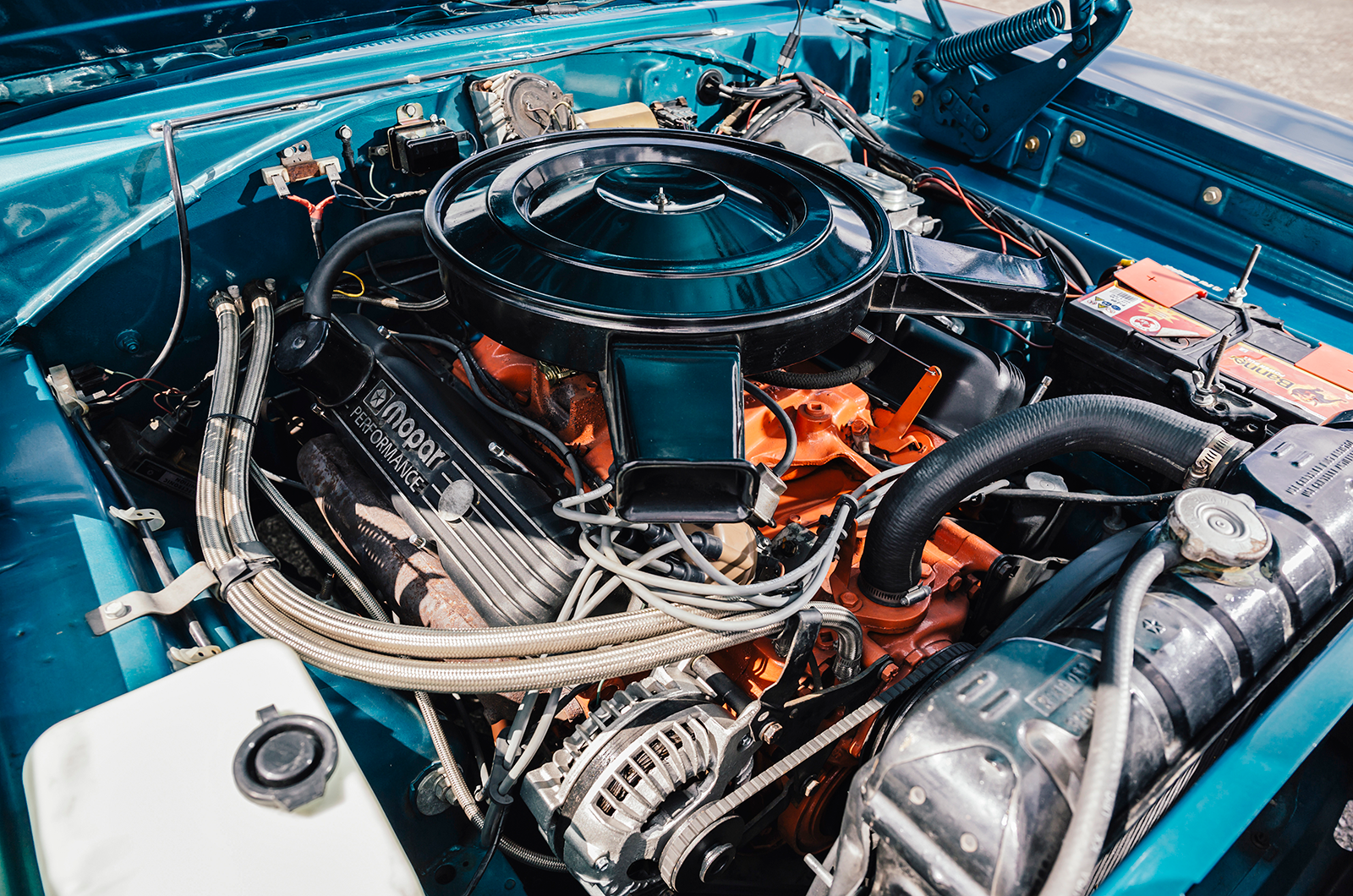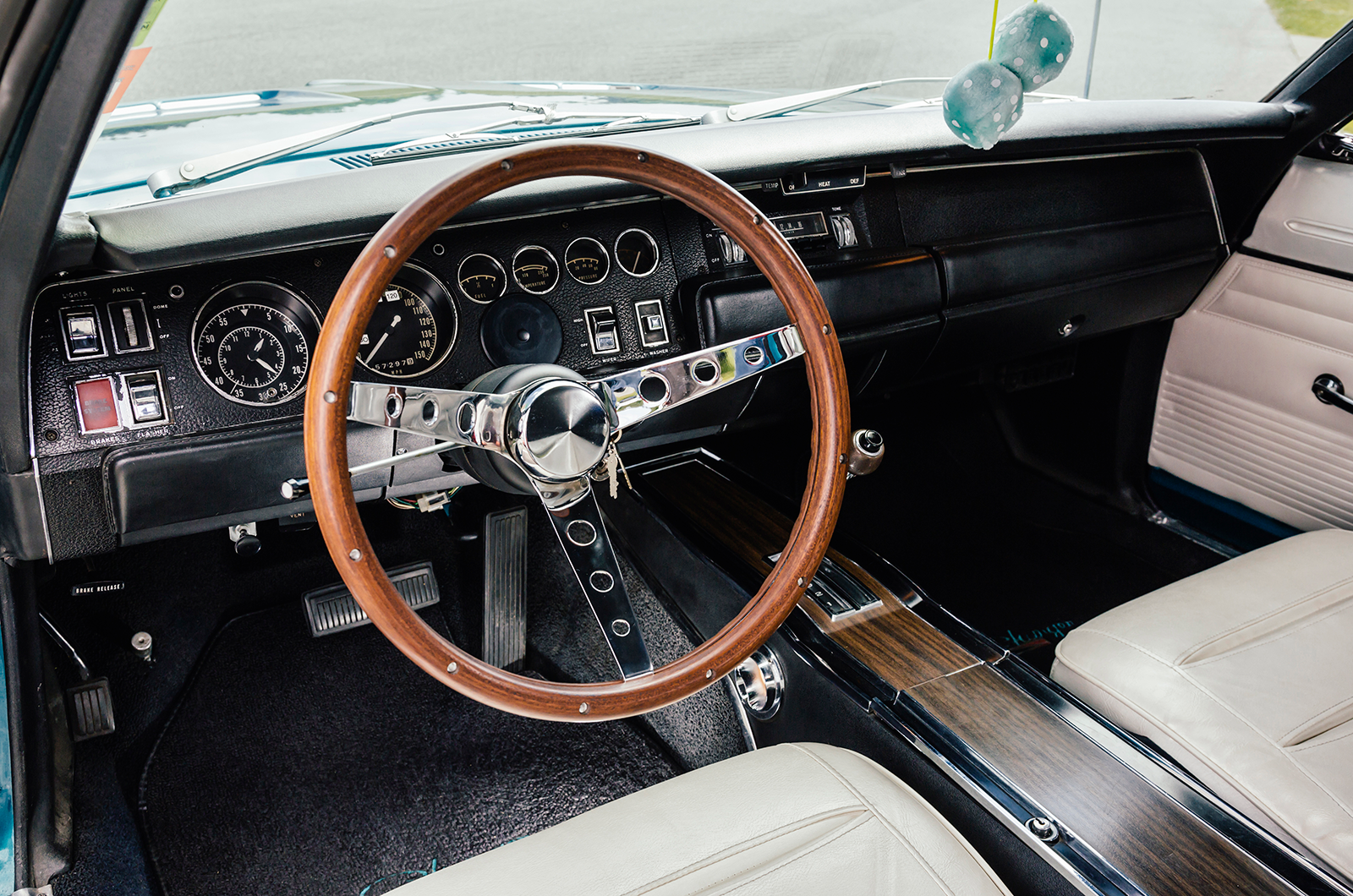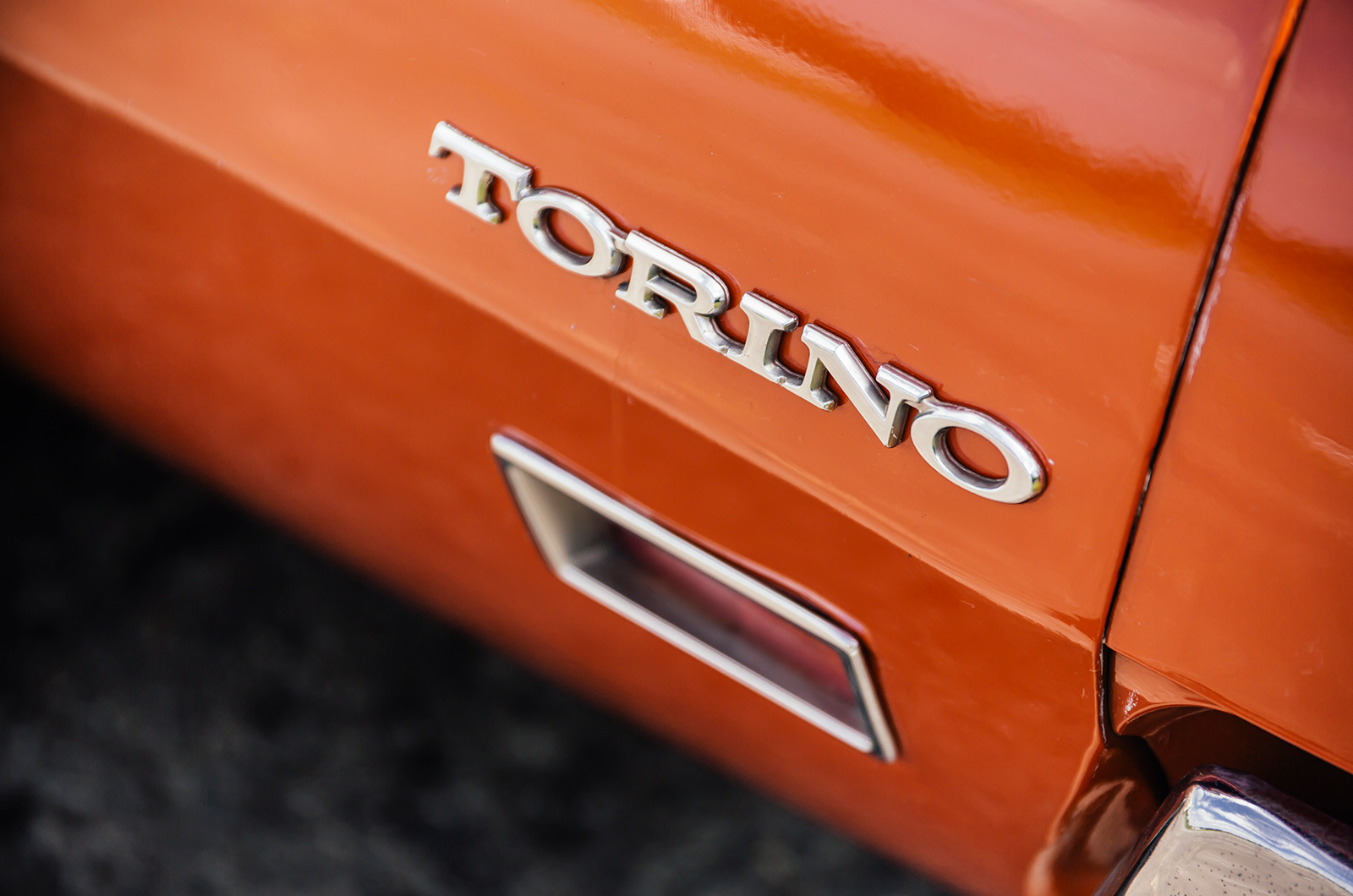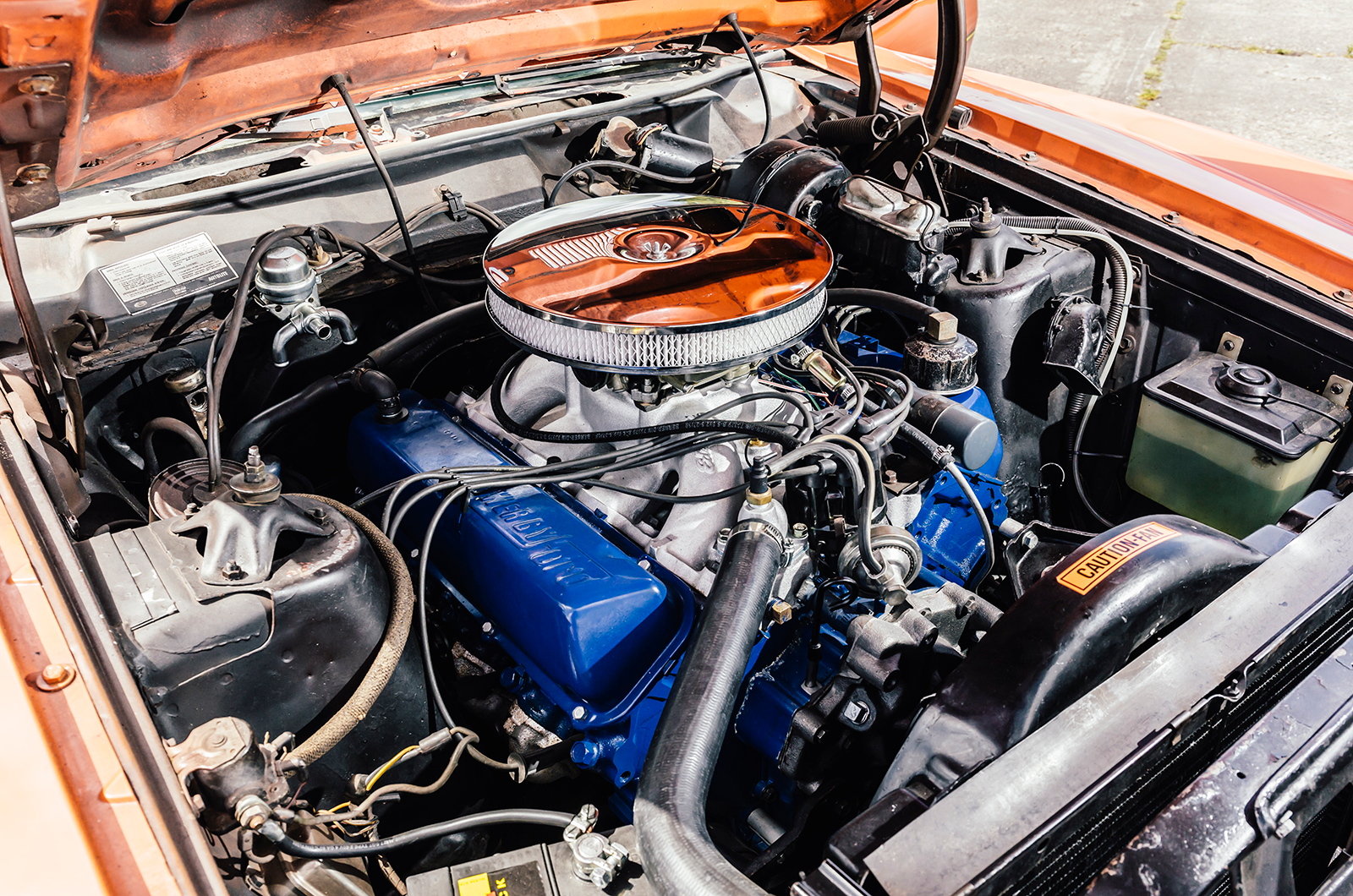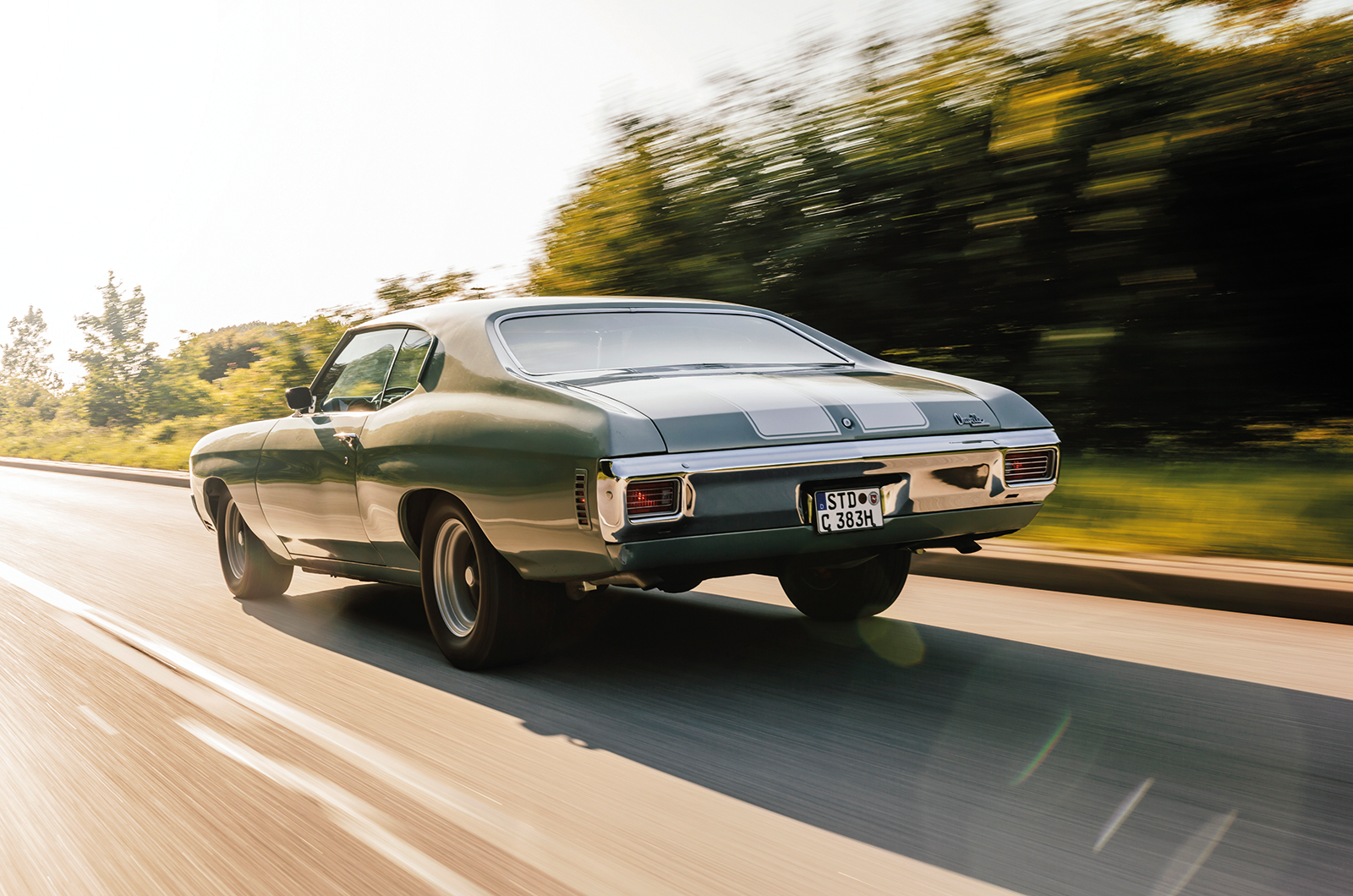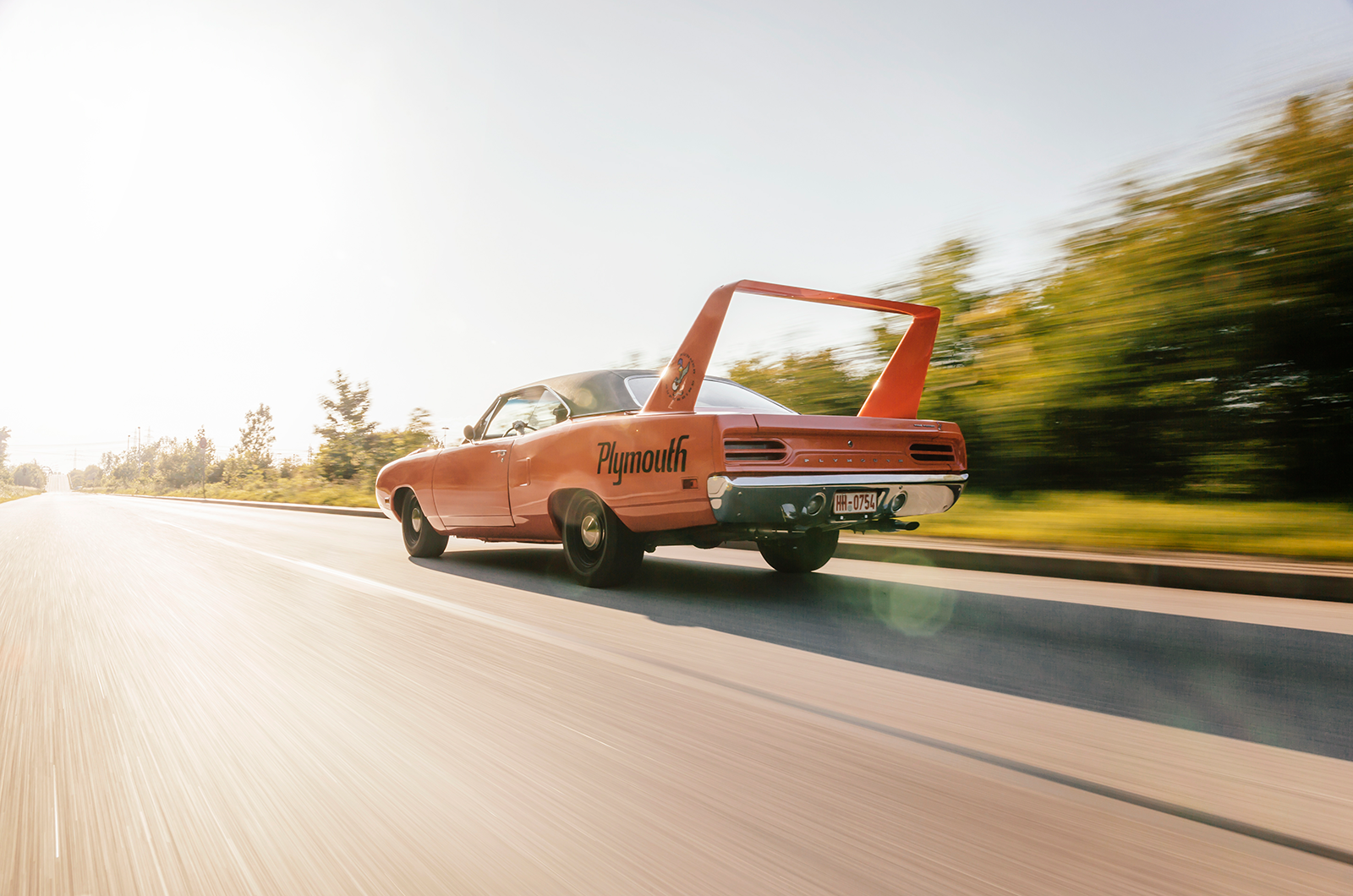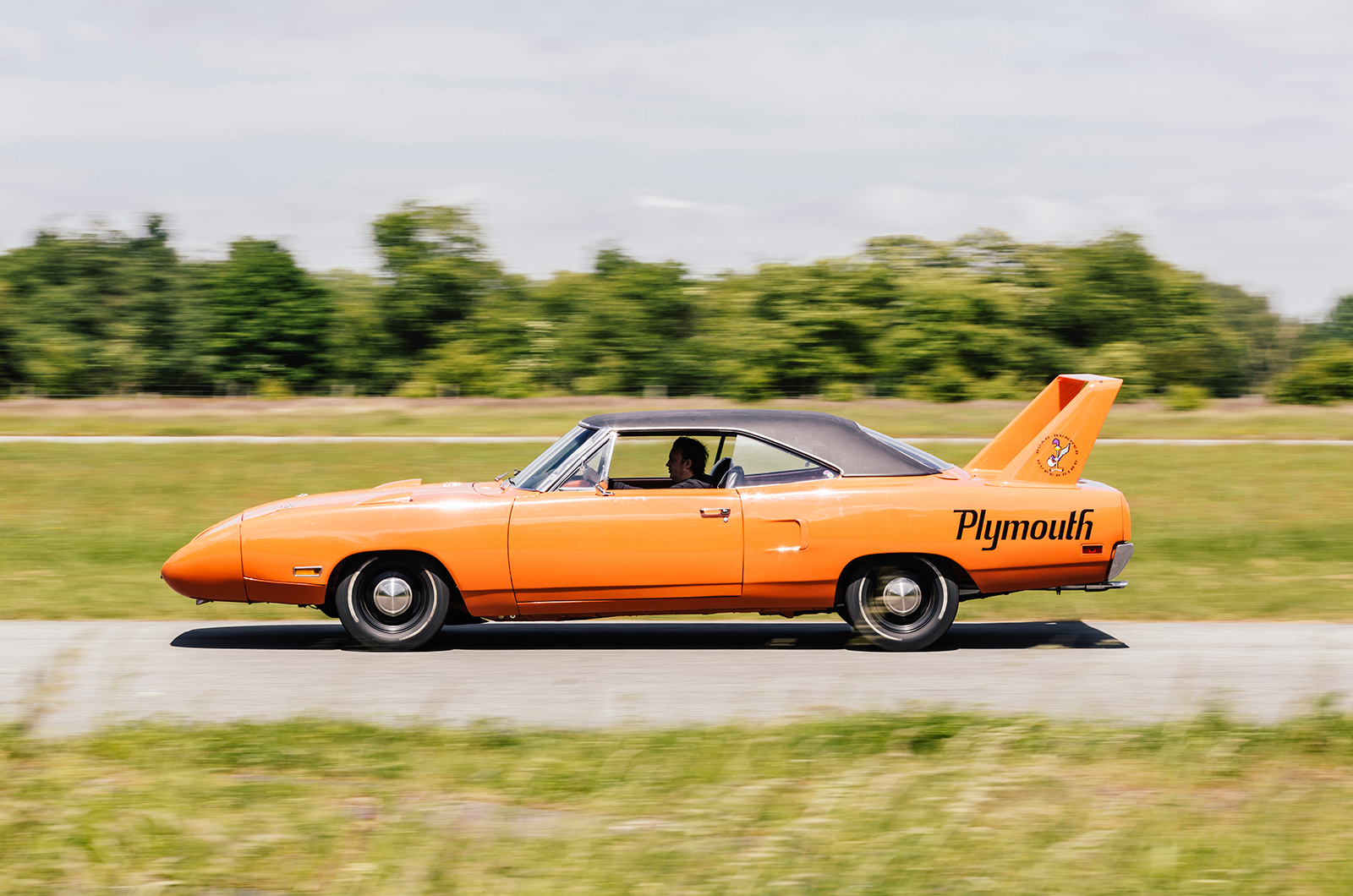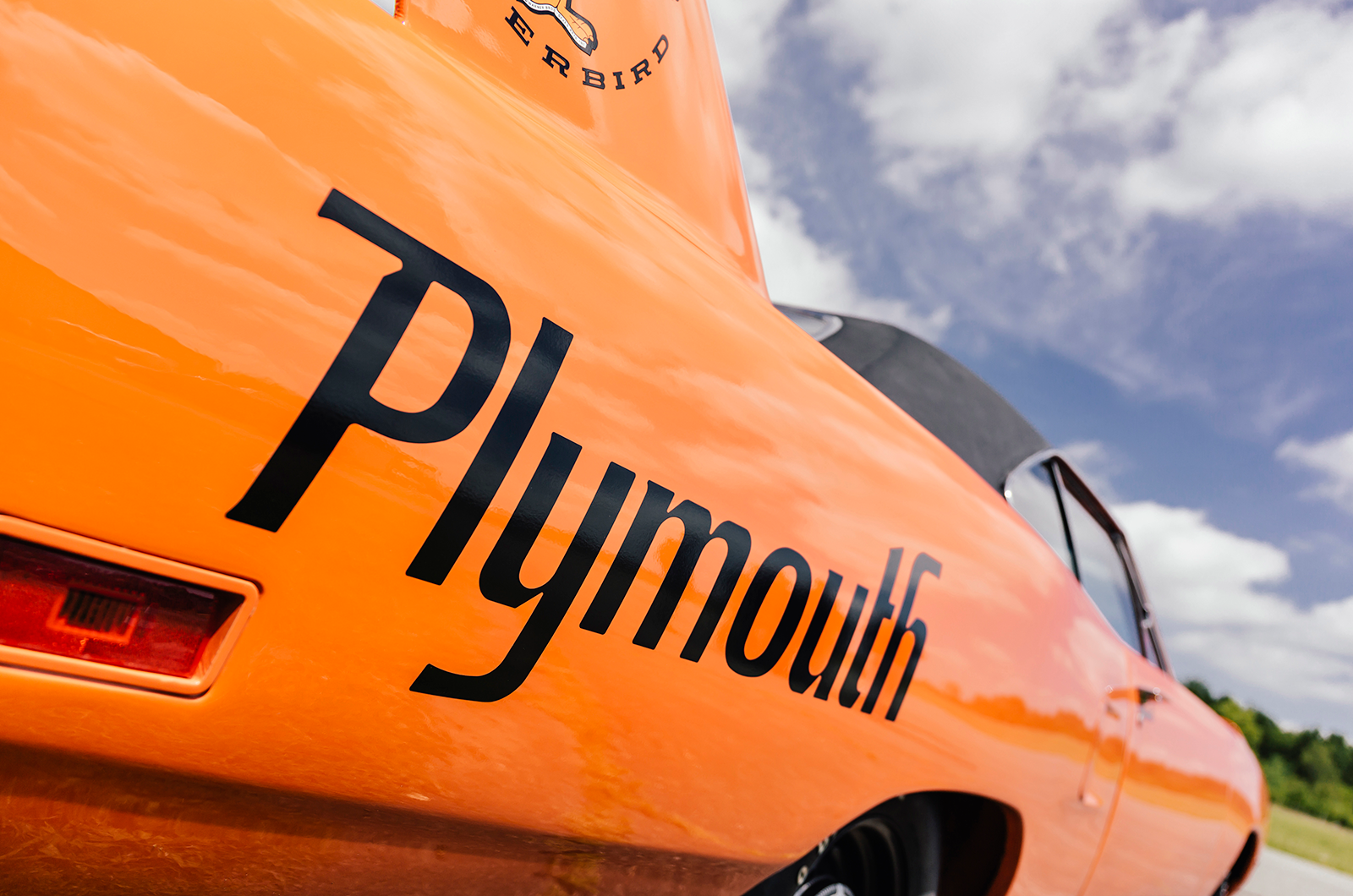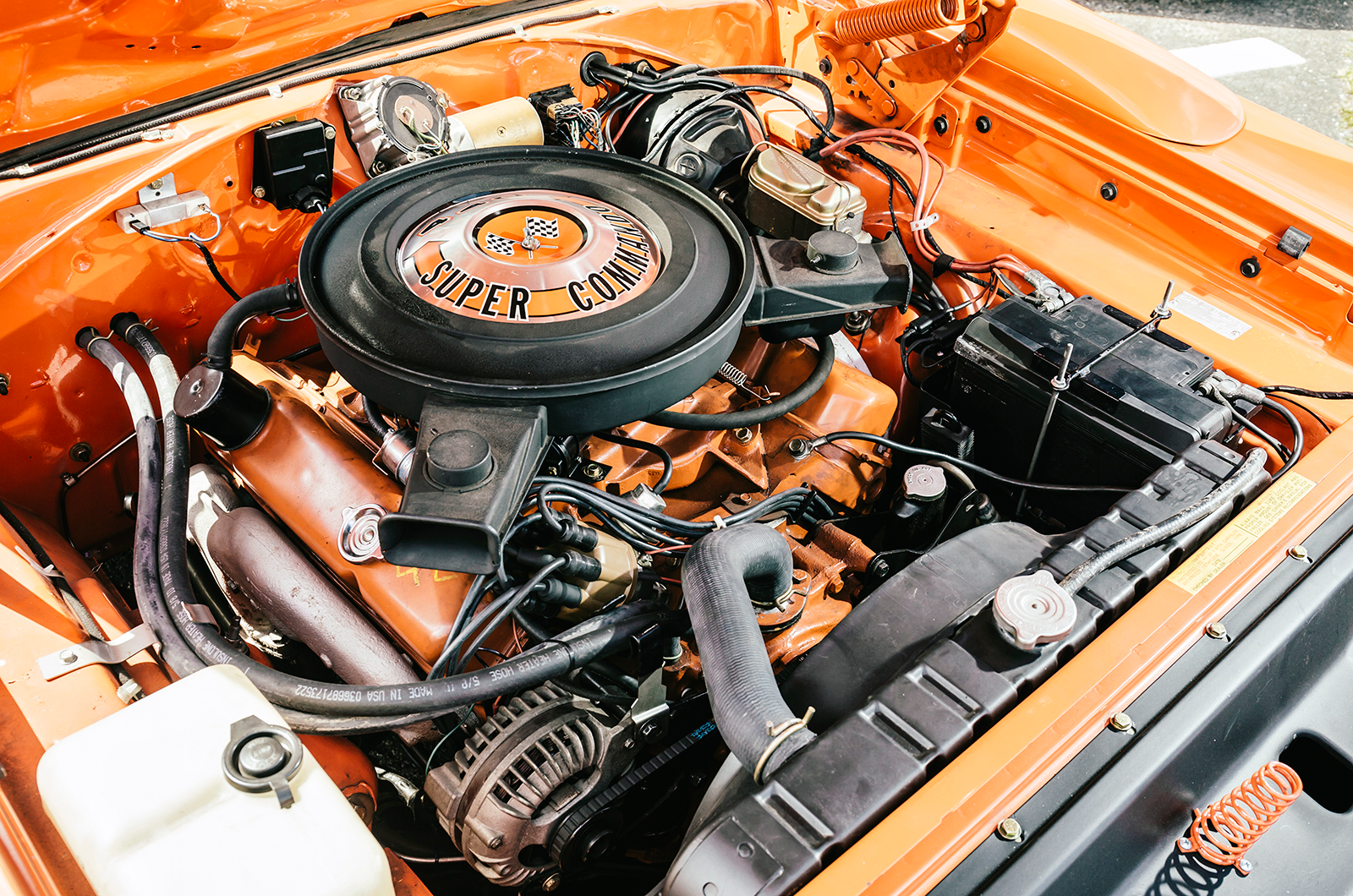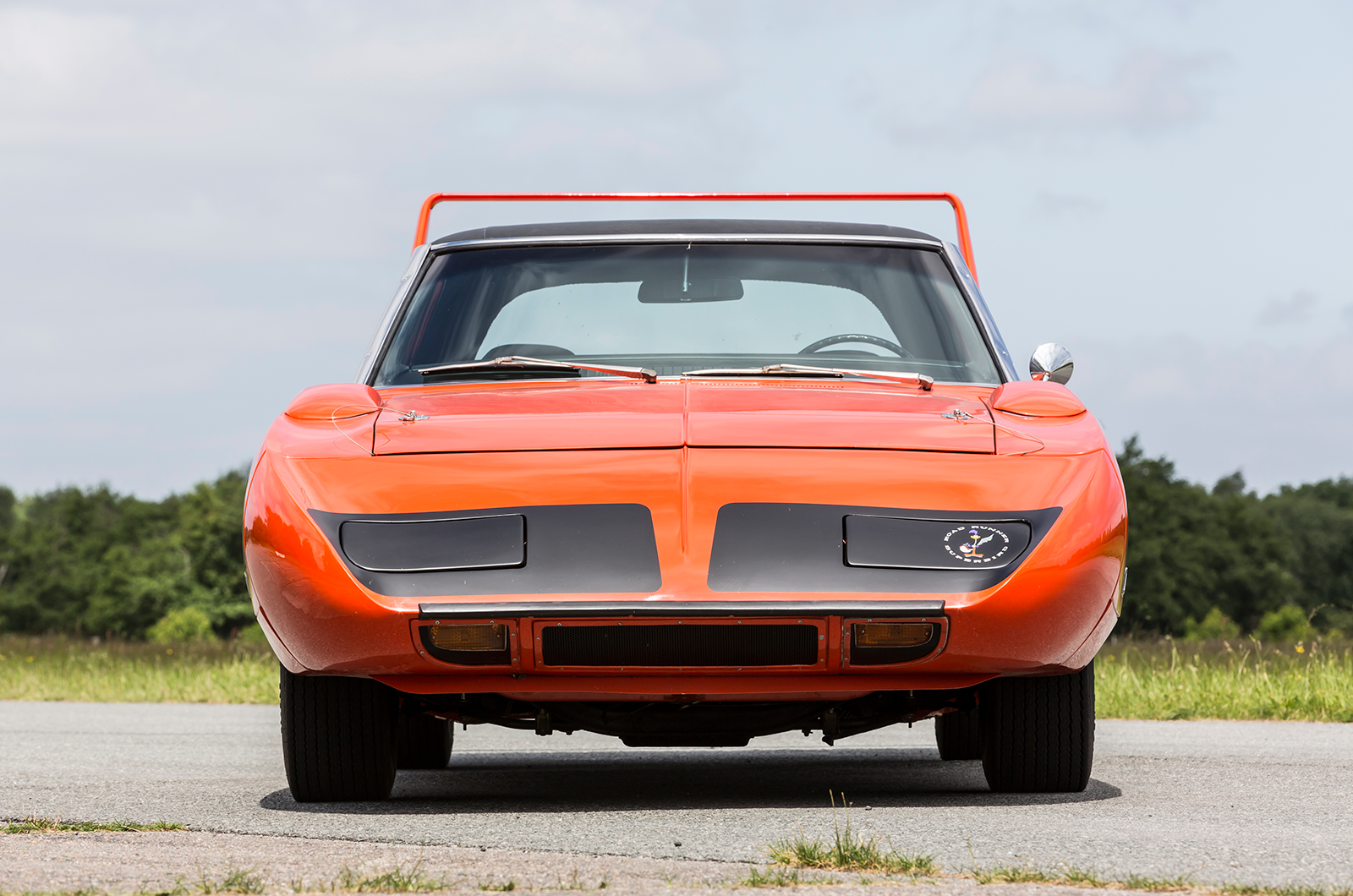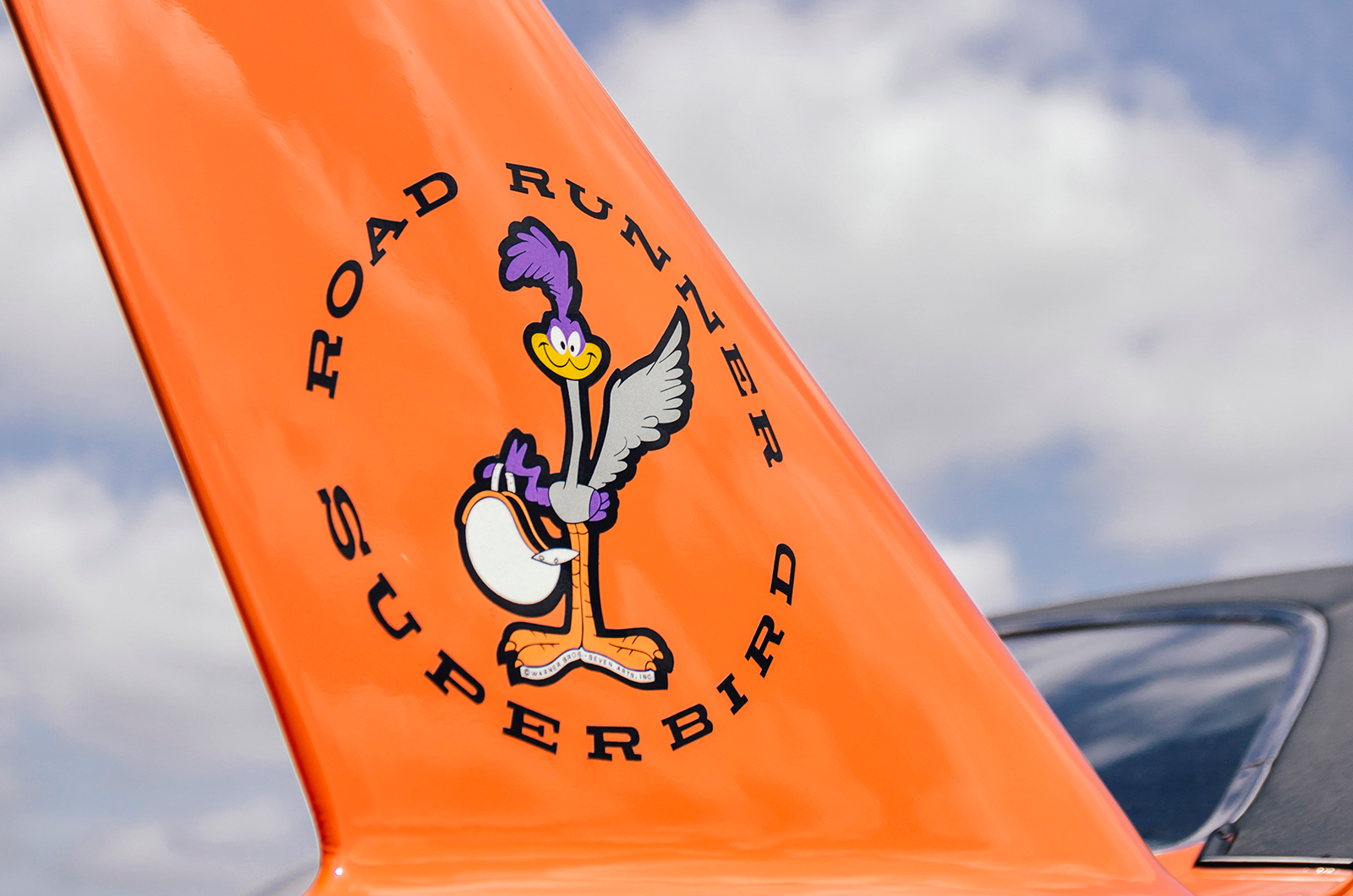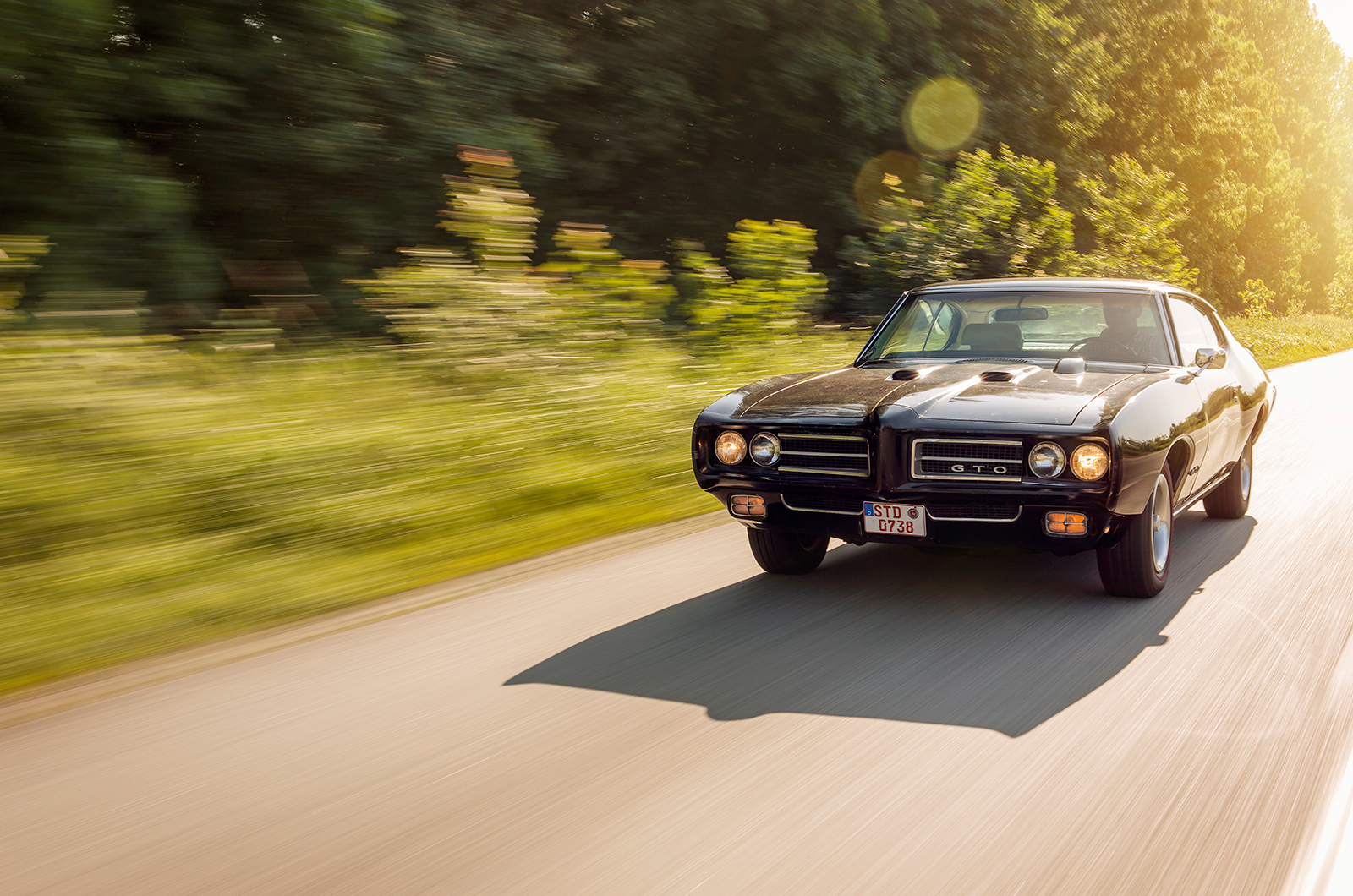From the largest member of our heavy-metal band to one of the smallest, but like so many little dogs this Chevrolet Chevelle bites just as hard with its souped-up 6.3-litre V8, jagged handling and bad-tempered attitude.
The 1970 Chevelle quickly achieved cult status among petrolheads, cemented by the addition of a 350bhp, 396cu in motor in the SS (Super Sport).
And while other manufacturers experimented with bizarre model names and ever wilder designs, Chevrolet knew how to score points with young buyers: more performance.
The SS clone has an aggressive stance
The pinnacle of the model year was marked by the vast 454cu in (7.4-litre) big-block, in 360bhp LS5 and outrageous 450bhp LS6 forms, the latter featuring all the racing technology Chevrolet could throw at it, including a forged crankshaft and connecting rods, forged pistons, larger intake ports and performance manifolds.
And that power output was reportedly an understatement to appease the insurance companies, with factory cars said to be good for up to 100bhp more.
Ordinarily we’d steer clear of a replica in a comparison test, but the creation of this SS tribute car ties in with the muscle-car philosophy of taking a lowly model and turning it into a road-burner – something thousands of enthusiasts did in period and still do today.
Our test car rolled off the assembly line in 1970 as a basic 307cu in Chevy Malibu, but today it’s a Chevelle SS clone with a hot-rodded 383cu in V8 pushing out around 400bhp.
Chevy’s mid-range racer feels agile
Fall into the comfortable vinyl chairs of the Chevelle, wake the V8 and the slightly rasping idle of the 6.3-litre all-iron unit comes as something of a surprise.
This is down to the short stroke, with longer connecting rods and shorter pistons enabling higher engine speeds.
Foot to the floorpan and the three-speed auto throws in its gears jerkily but firmly as the needle flicks around the rev counter, the engine roaring like a North American Aviation P-51 fighter.
And that seems entirely appropriate, because all good patriots love a Chevy.
Chrysler acquired the rights to Warner Brothers’ comic-book bird for its Road Runner
Uprated sports suspension helps this Chevelle feel the most agile car here.
With retrofitted anti-roll bars and the most accurate steering of the group, this roadgoing coyote sprints around corners keenly, noticeably more light-footed than the bearish Dodge and Ford.
What better to follow a wily (or should that be Wile E?) coyote than its fictional prey, the Road Runner?
Surely a leader in the competition for craziest American car of all time, this extreme version of Plymouth’s street-racing bird featured a nose prosthesis and cast-aluminium arch across the tail in a bid to help the Road Runner climb to the top step of the NASCAR podium.
Vitamin C Orange was among the wild paint hues
The 1970 SuperBird and its Dodge Charger Daytona twin are the embodiment of the frenzy that America’s automotive industry had reached by the turn of the decade.
It seemed everyone was going a bit bonkers, from engineers to designers to the advertising teams.
Everything had to be faster, more colourful, crazier; and at the top of the tree sat the Road Runner.
If it was stark even in its homeland, cruising provincial European streets in a Vitamin C Orange SuperBird today feels akin to riding a hippopotamus down the high road in a Batman costume.
Chrysler aimed for NASCAR glory with the Road Runner
Heads spin and jaws drop, just as they did when passing a Plymouth dealership in 1970.
And even as late as 1973, because nobody wanted to buy the SuperBird back then.
Not that its manufacturer was too bothered, because Chrysler’s sole aim with the Charger and Road Runner’s aerodynamic aluminium noses and monumental wings was racing success.
After Ford’s NASCAR titles in 1968 and ’69, Chrysler wanted to fight back.
The 58cm spoiler was key to stabilising the Plymouth in a straight line
It chose a radical path: the engineers took their steeds into the wind tunnel and mounted a 58cm-high spoiler on to the rear – half as high would have achieved the desired downforce, but an everyday car needs a bootlid that can be opened.
To homologate these tweaks, 1920 civilian specimens had to be produced and the result was one of the most outrageous road cars of the muscle-car wars.
SuperBird aviators can see the left strut of the wing permanently in the rear-view mirror, but the view ahead is weirder still: the snout appears to end somewhere near Texas.
The spongy power steering reacts with displeasure at every change of direction, but those speedway aerodynamics stabilise the Road Runner in a straight line even at autobahn speeds.
The Plymouth’s Super Commando V8 was topped by 426 ’hemi’
The 727 TorqueFlite transmission shifts more smoothly and precisely than a Mercedes-Benz automatic of the time, and can reportedly handle up to 1000bhp.
On America’s high-speed ovals, Chrysler’s bewinged coupes could top 180mph, when more than enough air was blown through the limited nasal opening to cool the powerful 7.2-litre V8.
The result was 38 victories in 48 races of the Grand National Series, until an aero ban clipped the SuperBird’s wings in 1971.
In city traffic, however, it’s quite a different story.
Spectacular though it may be, the Road Runner isn’t exactly practical
Starved of cooling air and, despite stiffer springs than its Charger sibling, about as agile as Mount Rushmore, this most extreme of Road Runners struggles with everyday usability.
This ’Bird is not built for cruising the strip: SuperBird drivers wear half-shell helmets, not hillbilly shirts.
Even though the Super Commando V8 of this car sends its power through a three-speed automatic ’box, and beneath the extreme sports wear lurks a normal Road Runner, don’t be fooled by the cartoonish decals: this is a street legal oval racer, not a child’s toy.
The SuperBird may be the fastest car of the five, but it’s also more expensive and less pleasurable to drive
Trying to make a rational decision and pick between these irrational machines is a challenge.
After all, in this arena only two things matter: performance and image.
Yet in the final reckoning the SuperBird doesn’t fly away from its rivals.
It’s faster than them, sure, but also costs significantly more and makes a far less satisfying companion on the road.
The GTO’s power and agility make it the standout car in our test
The Ford Torino GT remains the underdog, which keeps prices low for this comfortable yet surprisingly handsome near-two-tonner, but it’s outperformed by the star quality of the Dodge Charger.
It’s a compelling package, the prettiest of the set and still with NASCAR and movie cachet, but the king of Mopar lacks the handiness of the Chevrolet Chevelle, whose pace can be exploited by a chassis that feels more at home on the street.
Yet none of this madness would have existed without the gran turismo omologato – even if few local buyers at the time even knew what that meant.
The GTO marked the jumping-off point for the muscle car genre, and among this group impresses with its blend of power and sophisticated handling. The original, and still the best.
Words: Helge Thomsen/Lukas Hambrecht
Images: Roman Rätzke
Factfiles
Chevrolet Chevelle SS 396
- Sold/number built 1970/53,599
- Construction steel monocoque
- Engine all-iron, ohv 6590cc V8, four-barrel carburettor
- Max power 350bhp @ 5200rpm
- Max torque 415lb ft @ 3400rpm
- Transmission three-speed automatic, RWD
- Suspension at front independent, by double wishbones, anti-roll bar rear live axle, trailing arms; coil springs, telescopic dampers f/r
- Steering power-assisted recirculating ball
- Brakes discs front, drums rear
- Length 17ft 3in (5258mm)
- Width 6ft 4in (1930mm)
- Height 4ft 4¾in (1339mm)
- Wheelbase 9ft 8in (2946mm)
- Weight 3746lb (1699kg)
- 0-60mph 7 secs
- Top speed 130mph
- Mpg 11.1
- Price new $3497
- Price now $50-80,000*
Pontiac GTO
- Sold/number built 1969/58,126
- Construction steel monocoque
- Engine all-iron, ohv 6490cc V8, four-barrel Rochester carburettor
- Max power 350bhp @ 5000rpm
- Max torque 445lb ft @ 3600rpm
- Transmission four-speed manual, RWD
- Suspension at front independent, by double wishbones rear live axle, trailing arms; coil springs, telescopic dampers f/r
- Steering power-assisted recirculating ball
- Brakes discs front, drums rear
- Length 16ft 9½in (5118mm)
- Width 6ft 3¾in (1925mm)
- Height 4ft 4¼in (1328mm)
- Wheelbase 9ft 4in (2845mm)
- Weight 3673lb (1666kg)
- 0-60mph 7.3 secs
- Top speed 131mph
- Mpg 9.2
- Price new $2831
- Price now $30-70,000*
Plymouth Road Runner SuperBird
- Sold/number built 1970/1935
- Construction steel monocoque
- Engine all-iron, ohv 7206cc V8, four-barrel Holley carburettor
- Max power 375bhp @ 4600rpm
- Max torque 480lb ft @ 3200rpm
- Transmission three-speed automatic, RWD
- Suspension at front independent, by wishbones, torsion bars, anti-roll bar rear live axle, semi-elliptic leaf springs; telescopic dampers f/r
- Steering power-assisted recirculating ball
- Brakes drums
- Length 18ft 2in (5537mm)
- Width 6ft 4½in (1946mm)
- Height 4ft 5in (1346mm)
- Wheelbase 9ft 8in (2946mm)
- Weight 3841lb (1742kg)
- 0-60mph 6.4 secs
- Top speed 160mph(est)
- Mpg 8
- Price new $4298
- Price now $120-200,000*
Dodge Charger 440
- Sold/number built 1968-’70/221,000 (all)
- Construction steel monocoque
- Engine all-iron, ohv 7206cc V8, four-barrel Carter carburettor
- Max power 375bhp @ 4600rpm
- Max torque 480lb ft @ 3200rpm
- Transmission three-speed automatic, RWD
- Suspension at front independent, by wishbones, torsion bars, anti-roll bar rear live axle, semi-elliptic leaf springs; telescopic dampers f/r
- Steering power-assisted recirculating ball
- Brakes drums
- Length 17ft 4in (5283mm)
- Width 6ft 4½in (1946mm)
- Height 4ft 5in (1346mm)
- Wheelbase 9ft 9in (2972mm)
- Weight 3770lb (1710kg)
- 0-60mph 6.4 secs
- Top speed 131mph
- Mpg 8
- Price new $3506 (R/T)
- Price now $50-90,000*
Ford Torino GT 429
- Sold/number built 1970-’71/88,460
- Construction steel monocoque
- Engine all-iron, ohv 7033cc V8, four-barrel Motorcraft carburettor
- Max power 360bhp @ 4600rpm
- Max torque 440lb ft @ 3400rpm
- Transmission four-speed manual, RWD
- Suspension at front independent, by double wishbones, coil springs rear live axle, semi-elliptic leaf springs; telescopic dampers f/r
- Steering power-assisted recirculating ball
- Brakes discs front, drums rear, with servo
- Length 17ft 2¼in (5240mm)
- Width 6ft 4½in (1946mm)
- Height 4ft 3in (1295mm)
- Wheelbase 9ft 9in (2972mm)
- Weight 3840lb (1742kg)
- 0-60mph 7.1 secs
- Top speed 134mph
- Mpg 12.1
- Price new $3315 (1973)
- Price now $20-40,000*
*Prices correct at date of original publication
READ MORE
Muscle-car shoot-out: Chevrolet Camaro SS 396 Indy Pace Car vs Shelby GT500 Cobra Jet
Faster than a Lambo: which US muscle cars could beat the Miura?
Pacific reunion: Nissan Skyline GT-R vs Pontiac Tempest Le Mans GTO

